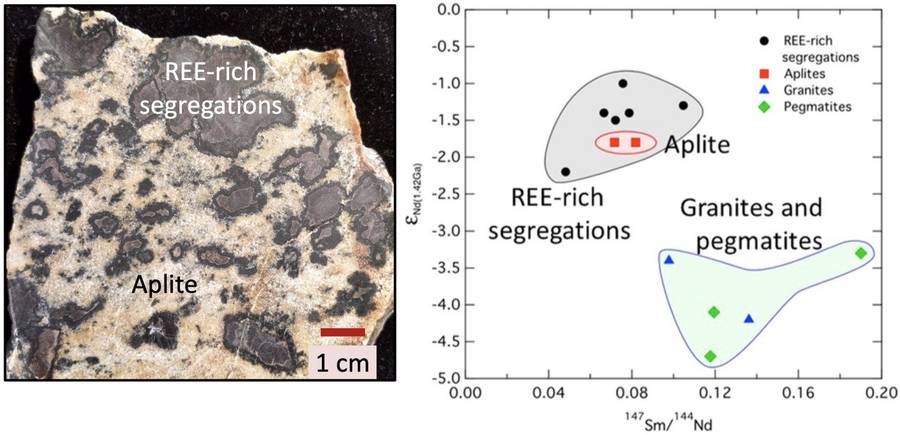Formation by silicate-fluoride+phosphate melt immiscibility of REE-rich globular segregations within aplite dikes
| Reviews and Highlights | Quantum Science | Molecular and Soft-matter | Ultrafast Nano-optics and Nanophotonics | Mineralogy and Geochemistry |
|---|
Charles R. Stern, Julien M. Allaz, Markus B. Raschke, G. Lang Farmer, M. Alexandra Skewes, and Jeremy T. Ross
Contrib. Mineral Petrol. 173, 65 (2018).
DOI PDF

Aplite dikes intruding the Proterozoic 1.42(±3) Ga Longs Peak-St. Vrain Silver Plume-type peraluminous granite near Jamestown, Colorado, contain F, P, and rare earth element (REE)-rich globular segregations, with 40-46% REE, 3.7-4.8 wt% P2O5, and 5-8 wt% F. A combination of textural features and geochemical data suggest that the aplite and REE-rich globular segregations co-existed as two co-genetic liquids prior to their crystallization, and we propose that they are formed by silicate?fluoride + phosphate (+ S + CO2) melt immiscibility following ascent, cooling, and decompression of what was initially a single homogeneous magma that intruded the granite. The REE distribution coefficients between the silica-rich aplites and REE-rich segregations are in good agreement with experimentally determined distribution coefficients for immiscible silicate?fluoride + phosphate melts. Although monazite-(Ce) and uraninite U-Th-Pb microprobe ages for the segregations yield 1.420(± 25) and 1.442(±8) Ga, respectively, thus suggesting a co-genetic relationship with their host granite, εNd1.42Ga values for the granites and related granitic pegmatites range from − 3.3 to − 4.7 (average − 3.9), and differ from the values for both the aplites and REE-rich segregations, which range from − 1.0 to − 2.2 (average − 1.6). Furthermore, the granites and pegmatites have (La/Yb)N <50 with significant negative Eu anomalies, which contrast with higher (La/Yb)N >100 and absence of an Eu anomaly in both the aplites and segregations. These data are consistent with the aplite dikes and the REE-rich segregations they contain being co-genetic, but derived from a source different from that of the granite. The higher εNd1.42Ga values for the aplites and REE-rich segregations suggest that the magma from which they separated had a more mafic and deeper, dryer and hotter source in the lower crust or upper mantle compared to the quartzo-feldspathic upper crustal source proposed for the Longs Peak-St. Vrain granite.
